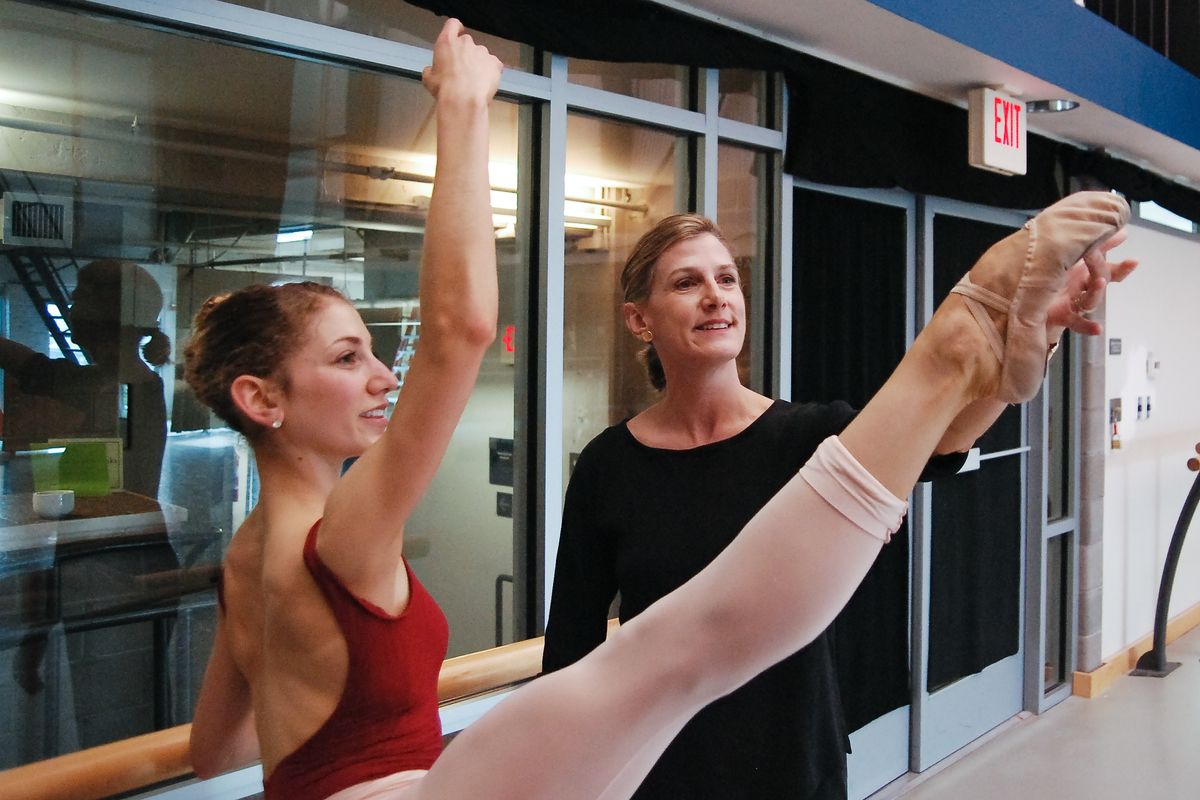From the Ground Up: Stoner Winslett's 30-Plus-Year Tenure Brings Solidarity To Richmond Ballet
At the time, one director ran the separate school and company. “They wanted someone to come work as her assistant, for the company,” says Winslett. Three months after Winslett took the position, the director resigned, and at just 22 years old, Winslett became Richmond Ballet’s artistic director and the company’s first full-time employee.
Now, over 34 years later, the Virginia troupe is a highly regarded regional company with a diverse repertoire, a $5.4 million budget and a growing national and international reputation. At the helm is one of the longest-sitting artistic directors in the country, and one of the few women in the role.
Despite her youth and, at the time, relative inexperience running a company, Winslett had a lot going for her. She was smart, she was game and she loved ballet. She had trained since the age of 4 and spent time at American Ballet Theatre’s school and North Carolina School of the Arts before she was sidelined by knee injuries, and then attended Smith. There, she began choreographing and directing student performances—and that’s where she made the RB connection. She was recommended for the directorship by the mother of a friend who was dancing with her at Smith.
 Winslett watching a company rehearsal. Photo by Aaron Sutten, Courtesy Richmond Ballet.
Winslett watching a company rehearsal. Photo by Aaron Sutten, Courtesy Richmond Ballet.
Reflecting on the company’s impressive growth, Winslett notes a challenging time that was coupled with a tremendous achievement: the acquisition of a building. After a successful capital campaign, the company moved into its current home in downtown Richmond in 2000. “It was incredible,” she says. “But we went from 17,000 to 55,000 square feet, so operating costs and some of the ways we intended to fund that didn’t go as well as we wanted. There were moments I thought we might not make it.”
Winslett found a way through by creating the Studio Series, repertory performances in the building’s Studio Theater, which converts a large dance space into an intimate black-box theater. The series, which typically features six-day runs of new work and repertory favorites with commentary from choreographers and the director, was and continues to be a tremendous success. Aside from supplementing their revenue, it builds audience appreciation for contemporary ballet and challenges the dancers’ versatility and stamina.
RB’s repertoire comes from three different categories: classics (such as Swan Lake,The Sleeping Beauty and The Nutcracker), significant works from choreographers of our own time and brand-new ballets. These new works, along with revivals of creations from recent years, dominate much of the repertoire, including ballets by contemporary choreographers such as Ma Cong, Jessica Lang (who began working with RB early on in her choreographic career) and Colin Connor.
In 2012, RB launched its second company, Richmond Ballet II, which serves in place of an apprentice program. Additionally, trainees with Richmond Ballet have the opportunity to audition for a joint degree program with Virginia Commonwealth University and earn a BFA, receiving credit for their RB experience.
Dancers tend to stay with the company for years, finding its ensemble structure and varied repertoire provide a nourishing home for artistic growth. Lauren Fagone, who has danced with RB for 13 years, says, “We’re a company of soloists and principals, in truth. Everyone has a moment when you are in the spotlight. And you have moments when you are the one in the wings, and you are so elated for your friends. I never say ‘my co-workers’ here. I say ‘my friends,’ or ‘my family.’ ”
In recent years the company has toured to New York and London, performing repertoire as diverse as Balanchine’s Valse-Fantaisie and Val Caniparoli’s Swipe, to great acclaim. This spring they’ll visit China as cultural ambassadors. But, Winslett says, success is not just about gaining national or international attention. “We want to be able to attract and keep the best artists that we can, and that means longer contracts.” RB is currently working toward 45 weeks as part of their fundraising campaign. And when they do tour, Winslett says RB’s aim is to fulfill its mission: “ ‘to awaken and uplift the human spirit,’ so the people in our community feel pride in what they have.”
Richmond Ballet At a Glance
- Size:
16 dancers, plus 10 in Richmond Ballet II - Starting Salary:
information available upon request - Length of Contract:
35 weeks, plus an extension for this year’s tour to China - Performances:
About 70, some on tour
Audition Advice:
“Richmond Ballet II is where we immediately look when we need a company dancer,” says Winslett. Outside dancers of interest are invited to Richmond to audition via company class.
Winslett values a clean line and a palpable love of the art. “Our dancers dance from their physical and emotional core. When I teach, I tell them, ‘By the waltz combination in the center, if you’re not smiling, you’re probably in the wrong profession.’ You shouldn’t be doing this unless you live it in a way that is irrepressible. And you ought to be showing everyone that, starting with the director and the ballet master, and ending with the audience.”





